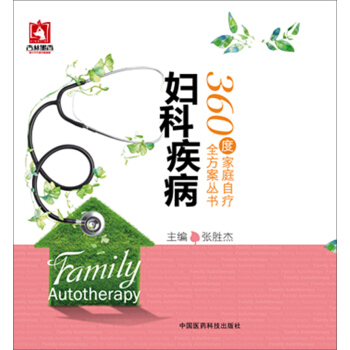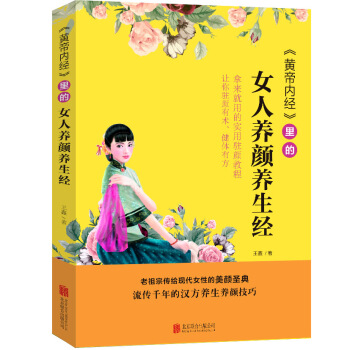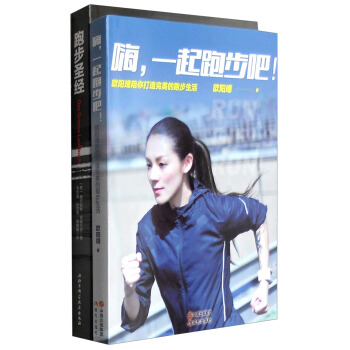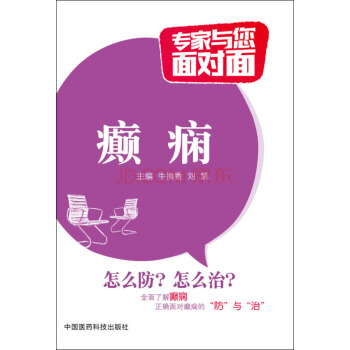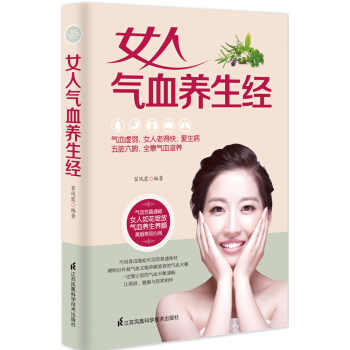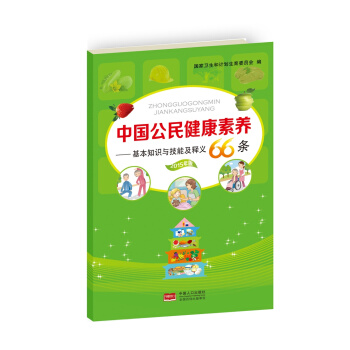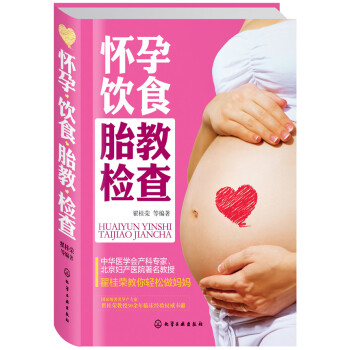具体描述
编辑推荐
<p> 精选众多中药和蔬果<br /> 调养身心,增强免疫力<br /> 全心全意为健康加分<br /> 常用常吃不生病<br /> 名医名院专家精心打造的绿色蔬果养生方案<br /> 《本草纲目中药蔬果养生速查全书》以《本草纲目》蓝本,古为今用,将传承千年的植物养生智慧与现代营养学知识相结合,实用性更强。<br /> “精品图鉴”:精心绘制草药蔬果插图,植物形象价格直观和形象。<br /> “药理延伸”:深入讲解相关药理知识。<br /> “医家评说”:汇集历代名医、古籍中中药蔬果的相关记载。<br /> “高清图片”和“良品选鉴”:中药蔬果的高清图片配以挑选方法和功效,便于正确选择。<br /> “养生药膳”:根据中药蔬果的品性,制作合适的养生药膳。</p>
内容简介
<p> 《本草纲目中药蔬果养生速查全书》以《本草纲目》为底本,详细讲解了常见中药和蔬菜、蔬果以及谷物的食用价值和功效。本书精选日常生活中常见的80种蔬果,17种中药,从专业角度详细介绍中药蔬果的学名、性味、主治、现代营养素和挑选方法,而且每种果蔬都附上了精美的手绘插图,并以牵线图解方式分部详解果蔬和草药的性味及主治疾病、食用功效。同时,书中还精选多种食材,搭配成100多种常见药膳,取材简单,做法详细,适合所有想以食疗的方法预防和治疗疾病的现代人阅读。</p>
作者简介
<p> 孙树侠,研究员,中央电视台“健康之路”、北京卫视“养生堂”主讲嘉宾。现任中国保健协会食物营养与安全专业委员会会长,世界卫生组织健康教育与促进合作中心学术委员会委员、中国健康教育协会常务理事、卫生部和国家文明办社区教育健康专家、中央国家机健康大讲堂讲师团专家、联合国工业组织绿色产业专业委员会委员。曾主持多项国家和部委的研究和攻关项目,获8项发明专利,主编20 多部专著、教材及科普类书籍。</p> <p><br /> 吴剑坤,中医治未病科主任、体检中心主任,北京市中医医院副主任药师、执业药师、高级健康管理师。荣获 2004 年度、2005 年度北京市药品不良反应监测工作先进个人。2006 ~ 2009 年担任中药房主任,出版《医院制剂手册》《药品手册-中药分册》,内容包括 325 种中成药、600 种常用中药饮片、医院制剂品种、协定处方等内容的介绍,受到临床医生的欢迎。</p>
内页插图
目录
<p>第一章 中草药知识入门<br />20 药方组方原则 <br />22 中药的气味阴阳 <br />24 中药的五味 <br />26 药方的组成变化 <br />28 中草药的鉴别 <br />30 中药的煎煮及服用</p> <p> </p> <p>第二章 调养五官<br />34 决明降压润肠·清肝明目 <br />36 艾明目生肌·止血安胎 <br />38 人参安定精神·宁身益智 <br />40 防风安神定志·疏肝理气 <br />42 茺蔚 活血调经·清肝明目 <br />44 黄精补肝明目·强健筋骨 <br />46 牛蒡疏散风热·宣肺祛痰 <br />48 地榆除渴明目·疗刀箭伤</p> <p> </p> <p>第三章 调养五脏<br />52 甘草补益五脏 · 调理气血 <br />54 草豆蔻燥湿行气 · 温中止呕 <br />56 芍药通利血脉 · 补益肾气 <br />58 肉豆蔻暖胃除痰·促进食欲 <br />60 香附除胸中热·濡润肌肤 <br />62 白术止汗止呕 · 帮助消化 <br />64 茉莉理气和中·开郁辟秽 <br />66 麦门冬养阴生津·润肺止咳 <br />68 藿香开胃止吐·增加食欲 <br />70 菊花调理肺肾·益肝补阴 <br />72 知母清心除热·生津润燥 <br />74 桑叶利通血气·可补肝肾 <br />76 芭蕉 止渴润肺·润肠通便 <br />78 小麦养心益肾·除热止渴 <br />80 薏苡健脾利湿·补肺清热 <br />82 大豆健脾宽中·润燥消水 <br />84 葱发汗散寒·散寒通阳 <br />86 大蒜强健脾胃·解毒杀虫 <br />88 黄瓜清热利水·生津止渴 <br />90 栗滋阴补肾·令人耐饥 <br />92 梨可助消化·润肺清心 <br />94 橄榄开胃下气·清肺解毒 <br />96 槟榔生肌止痛·健脾调中 <br />98 椰子补脾益肾·面容光泽 <br />100 胡椒温中散气·开胃解毒</p> <p> </p> <p>第四章 润肠利尿<br />104 淫羊藿通利小便·补益精气 <br />106 肉苁蓉润肠通便·延年益寿 <br />108 紫苏润肺宽肠·利大小便 <br />110 车前清热利尿·凉血解毒 <br />112 泽泻消除肿胀·通利小便 <br />114 豌豆清凉解暑·利尿止泻 <br />116 海带泄热利水·祛脂降压 <br />118 芝麻滋润肌肤·解毒润肠 <br />120 苜蓿健脾养胃·清利肠道 <br />122 灯心草清心降火·利尿通淋 <br />124 桃润肠通便·面色润泽 <br />126 菠菜补血止血·止渴润肠 <br />128 石榴治疗泻痢·便血脱肛 <br />130 香瓜清肺润肠·有利小便 <br />132 葡萄除肠间水·调中治淋 <br />134 菱角利尿通乳·可解酒毒</p> <p> </p> <p>第五章 活血通经<br />138 当归 活血补血·调经止痛 <br />140 牛膝 逐淤通经·引血下行 <br />142 番红花活血化淤·解郁安神 <br />144 地黄清热生津·生精补血 <br />146 王不留行活血通经·下乳消肿 <br />148 马鞭草活血通经·利水消肿 <br />150 丝瓜解暑除烦·通经活络 <br />152 荔枝生津止渴·益肝补脾 <br />154 山楂消食化积·行气散淤 <br />156 慈姑活血散淤·解毒消肿</p> <p> </p> <p>第六章 解毒止痛<br />160 黄连清热燥湿·泻火解毒 <br />162 紫草解毒透疹·活血凉血 <br />164 茄子散血止疼·解毒消肿 <br />166 秦艽祛除风湿·可止痹痛 <br />168 细辛祛风散寒·通窍止痛 <br />170 杏止渴生津·清热去毒 <br />172 薄荷疏风散热·辟秽解毒 <br />174 蒲公英化解热毒·消除恶肿</p> <p> </p> <p>第七章 止咳化痰<br />178 贝母滋润心肺·化痰止咳 <br />180 黄芩清热除湿·利气消痰 <br />182 远志稳定心气·祛痰消肿 <br />184 桔梗补劳养气·疗咽喉痛 <br />186 柴胡除痰疏表·解热透邪 <br />188 生姜治嗽温中·发散风寒</p> <p> </p> <p>第八章 益气补虚<br />192 黄芪生肌补血·益气壮骨 <br />194 枣 润泽心肺·补中益气 <br />196 沙参补中益气·排脓消肿 <br />198 荸荠开胃消食·温中益气</p> <p> </p> <p>附录一 中药蔬果索引 / 200<br />附录二 中药蔬果图鉴 / 218<br />附录三 中药蔬果养生食谱 / 225</p>
精彩书摘
<p> 精选 调养 安神定志·疏肝理气<br /> 中药 防风<br /> 草部/山草类 防,御的意思。它的作用以治风为要,所以叫防风。屏风是防风的隐语。称芸、茴,是因为它的花像茴香,气味像芸蒿、兰。<br /> 防风花<br /> 治四肢拘急,不能走路,经脉虚弱,骨节间痛,心腹痛。<br /> 防风叶<br /> 治中风出热汗。<br /> 防风籽<br /> 治风证力强,可调配食用。<br /> 释名 铜芸、茴芸、茴草、屏风、百枝、百蜚。<br /> 性味 味甘,性温,无毒。<br /> 有效成分 挥发油、甘露醇等。<br /> 临床应用 自汗不止,盗汗,消风顺气、治老年人便秘,偏正头痛,小儿囟门久不闭合,妇人崩漏。<br /> 医家评说<br /> 《神农本草经》主风邪所致的视物不清,风行周身,骨节疼痛,烦满,久服身轻。<br /> 《名医别录》疗胁痛,肝风,头风,四肢挛急,破伤风。<br /> 《日华子诸家本草》治三十六种风病,男子一切劳伤,能补中益神,治疗目赤肿痛,遇风流泪及瘫痪,通利五脏关脉,治五劳七伤,盗汗,心烦体重,能安神定志,调匀气脉。<br /> 药理延伸<br /> ●甘防风,治风通用。治上半身风证,用防风身;治下半身风证,用防风梢。防风是治风祛湿的要药,因风能胜湿。它还能泻肺实,如误服会泻人上焦元气。防风治周身疼痛,药效较弱,随配伍引经药而至病所,是治风药中的润剂。如果补脾胃,非防风引用不可。<br /> ●防风与葱白同用,能行全身气血;与泽泻、 本同用,能治风病;与当归、芍药、阳起石、禹余粮同用,能治疗妇人子宫虚冷。防风畏萆,能解附子毒,恶藜芦、白敛、干姜、芫花。<br /> ●防风又行足阳明、太阴二经,为肝经气分药。<br /> 形态特征<br /> 主高30~80厘米,全体无毛。根粗壮,茎基密生褐色纤维状的叶柄残基。<br /> 良品严选<br /> 此药草的作用以治风为要,所以叫防风。称芸、茴,是因为它的花像茴香,气味像芸蒿、 兰。江淮一带所产的大多是石防风,生长在山石之间。二月采其嫩苗做菜,味辛甘而香,称作珊瑚菜。它的根粗、外形丑,籽可作为种子。明朝吴绶说,凡入药以黄色润泽的防风为佳,白的多沙条,不能用。<br /> 功效<br /> 解表祛风,胜湿,止痉。<br /> 养生药膳<br /> 益气补血+壮阳<br /> 防风甘草鱼汤<br /> 材料:<br /> 防风5克、甘草5克、白术10克、红枣3颗、黄芪9克、虱目鱼肚1片,芹菜少许,盐、味精、淀粉各适量。<br /> 做法:<br /> 1.将虱目鱼肚洗净,切成薄片,放少许淀粉,轻轻搅拌均匀,腌渍20分钟,备用。<br /> 2.药材洗净、沥干,备用。锅置火上,加入清水,将药材与虱目鱼肚一起煮,用大火煮沸,再转入小火续熬至味出时,放适量盐、味精调味,起锅前加入适量芹菜即可。<br /> ……</p>
前言/序言
<p> 发现天然植物的养生智慧<br /> 中医强调利用“药食同源”原理,达到延年益寿、保养生命、增强体质、预防疾病的目的,也就是利用天然的植物,照顾好自己的身体。这符合现代人所倡导的“纯天然”养生之道。<br /> 《神农本草经》记载,药分上中下三品,上药可常用,选为四季保健养生最适宜。中药药膳最适合忙碌的现代人养生之用。这是因为,“人之气禀,罕得其平。有偏于阳而阴不足者,有偏于阴而阳不足者,故必假于药膳以滋助之。使气血归于平和,乃能形神俱茂,而疾病不生也”。《黄帝内经》说:“圣人不治已病治未病,不治已乱治未乱,此之谓也。夫病已成而后药之,乱已成而后治之,譬犹渴而穿井,斗而铸锥,不宜晚乎?”由此可知,补养非旦夕可成,故古人采用药膳以补养之。<br /> 本书以《本草纲目》为底本,精选日常生活中最常用的中药蔬果,并补充了中药蔬果的学名、性味、主治、现代营养知识和挑选方法。同时,每种中药蔬果都附上精美的手绘插图,以牵线的方式图解草药各部位的性味和主治。精选出了100多种常见的药膳,适合想以温和的方法预防和治疗疾病的现代人。<br /> 本书可以让读者了解植物中的天然成分与作用,也希望藉由书中的相关内容,让读者更亲近天然草药。本书针对不同症状精选出适用药材,讲解其功效,让您随手翻,随时看,无病养生,有病便成为对症下药的草药指南。当然,由于每个人的体质不同,所处的环境各异,并非所有药材都适用,因此仍须医师针对个人情况调剂配方,才能达到真正防病治病的效果。</p>
medicinal plants and fruits and vegetables health quick lookup complete book this book is a comprehensive guide to the medicinal properties and health benefits of traditional Chinese medicine, fruits, and vegetables. it provides a quick and easy way to access information on a wide range of natural remedies, allowing readers to make informed choices about their health and well-being. the book is divided into several sections, each focusing on a different category of medicinal plants, fruits, and vegetables. the first section covers common herbs and spices, such as ginger, garlic, and turmeric, detailing their traditional uses and scientifically proven health benefits. it also explores their nutritional value, culinary applications, and recipes that incorporate these powerful ingredients. the second section delves into the world of fruits and vegetables, highlighting their rich array of vitamins, minerals, and antioxidants. from everyday staples like apples and spinach to exotic superfoods like goji berries and kale, this section offers insights into their unique health-promoting properties. it also provides practical advice on how to incorporate these nutrient-dense foods into a balanced diet for optimal health. the third section focuses on more specialized medicinal plants, including those used in traditional Chinese medicine. it explains the principles behind these remedies, their specific applications, and their synergistic effects when combined with other ingredients. the book also offers guidance on how to safely and effectively use these powerful natural medicines, emphasizing the importance of consulting with healthcare professionals when necessary. throughout the book, readers will find detailed descriptions of each plant, fruit, or vegetable, including its botanical classification, origin, and cultivation. it also covers common ailments and conditions that can be addressed with natural remedies, such as digestive issues, insomnia, stress, and immune system support. this book is an invaluable resource for anyone interested in exploring the healing power of nature. whether you're a seasoned herbalist, a health-conscious individual, or simply curious about natural remedies, this comprehensive guide will empower you to make informed decisions about your health and embrace a more natural and holistic approach to well-being. more details on the book's content: section 1: common herbs and spices this section provides an in-depth exploration of commonly found herbs and spices that have been used for centuries for their medicinal properties. each entry includes: botanical name and family: scientific classification for precise identification. common names: various regional or popular names. origin and history: where the plant originated and its historical significance in traditional medicine. active compounds: identification of key chemical constituents responsible for their therapeutic effects. traditional uses: a comprehensive overview of how these herbs and spices have been used in various cultures for different ailments. scientifically proven benefits: evidence-based research supporting their health claims, including mechanisms of action. nutritional profile: detailed breakdown of vitamins, minerals, and other essential nutrients. culinary applications: how to best use them in cooking to enhance flavor and extract their health benefits. recipes: practical and delicious recipes that showcase the medicinal properties of these ingredients. precautions and contraindications: important safety information and potential interactions with medications or pre-existing conditions. examples of herbs and spices covered: ginger (zingiber officinale): its potent anti-inflammatory and anti-nausea properties, use in digestion, and recipes for ginger tea and stir-fries. garlic (allium sativum): its cardiovascular benefits, immune-boosting effects, and role in antimicrobial therapies, with recipes for roasted garlic and garlic soup. turmeric (curcuma longa): its powerful antioxidant and anti-inflammatory compound curcumin, its benefits for joint health and brain function, and recipes for golden milk and turmeric-spiced dishes. cinnamon (cinnamomum spp.): its role in blood sugar regulation, antioxidant properties, and use in baking and warming beverages. rosemary (rosmarinus officinalis): its cognitive-enhancing effects, antioxidant power, and use in savory dishes and aromatherapy. mint (mentha spp.): its digestive aid properties, refreshing qualities, and uses in teas, desserts, and breath fresheners. section 2: fruits and vegetables: nature's nutrient powerhouses this section delves into the vast world of fruits and vegetables, emphasizing their role in providing essential nutrients and promoting overall health. each entry includes: botanical name and family: scientific classification. common names: everyday names. origin and cultivation: where they come from and how they are grown. key nutrients and phytochemicals: detailed breakdown of vitamins, minerals, fiber, antioxidants, and other beneficial plant compounds. health benefits: extensive discussion on their positive impact on various bodily systems, from cardiovascular health to immune function and disease prevention. culinary versatility: creative ways to incorporate them into daily meals, snacks, and beverages. storage and preparation tips: how to maximize their freshness and nutritional value. seasonal availability: guidance on enjoying fruits and vegetables at their peak. dietary recommendations: advice on integrating them into a balanced and healthy diet. examples of fruits and vegetables covered: apples (malus domestica): their fiber content, antioxidants, and benefits for gut health, with recipes for apple pie and apple sauce. berries (fragaria, rubus, vaccinium, etc.): their high antioxidant capacity (anthocyanins), benefits for cognitive function and heart health, and recipes for berry smoothies and jams. leafy greens (spinacia oleracea, brassica oleracea, etc.): their rich source of vitamins (a, c, k), minerals (iron, calcium), and antioxidants, and their role in bone health and disease prevention, with recipes for salads, sautéed greens, and smoothies. citrus fruits (citrus spp.): their vitamin c content, antioxidants, and immune-boosting properties, and their use in juices, marinades, and desserts. cruciferous vegetables (brassica oleracea var. italica, brassica oleracea var. capitata, etc.): their anti-cancer compounds (glucosinolates), fiber, and vitamins, and their role in detoxification and overall health, with recipes for steamed broccoli and coleslaw. root vegetables (daucus carota, beta vulgaris, ipomoea batatas, etc.): their complex carbohydrates, fiber, vitamins, and minerals, and their benefits for energy, vision, and digestion, with recipes for roasted carrots, beet salads, and sweet potato fries. alliums (allium cepa, allium sativum): their sulfur compounds, their benefits for heart health and immune function, and their use in a wide array of savory dishes. section 3: specialized medicinal plants and traditional Chinese medicine principles this section delves into more potent and traditionally recognized medicinal plants, with a particular focus on their applications within traditional Chinese medicine (tcm) principles. each entry includes: botanical name and family: scientific classification. tcm names and properties: the names used in tcm, their energetic properties (e.g., warming, cooling, neutral), taste, and meridian tropism. key active constituents: identification of major active compounds and their pharmacological actions. tcm indications and actions: how these plants are used in tcm to address specific imbalances and symptoms (e.g., clearing heat, tonifying qi, invigorating blood). modern scientific research: scientific evidence supporting their traditional uses and identifying novel therapeutic applications. preparation methods: traditional methods of preparation and dosage recommendations within tcm. synergistic combinations: how these herbs are often combined with other herbs to enhance their efficacy and address complex conditions. safety considerations and contraindications: important warnings regarding potential side effects, drug interactions, and situations where their use is not recommended. ethical sourcing and sustainability: information on responsible harvesting and cultivation practices. examples of specialized medicinal plants covered: ginseng (panax ginseng): its adaptogenic properties, ability to tonify qi and boost energy, and its use in stress management and cognitive enhancement. reishi mushroom (ganoderma lucidum): its immune-modulating effects, its role in promoting longevity and reducing stress, and its use in teas and supplements. astragalus (huang qi): its potent qi-tonifying properties, its benefits for immune support and fatigue, and its use in soups and decoctions. goji berries (lycium barbarum): their rich antioxidant content, their benefits for eye health and liver function, and their use in teas, smoothies, and culinary dishes. licorice root (glycyrrhiza glabra): its expectorant, anti-inflammatory, and adrenal-supporting properties, and its use in soothing sore throats and digestive complaints. rhodiola (rhodiola rosea): its adaptogenic qualities, its ability to combat fatigue and improve mental performance, and its use in capsules and tinctures. echinacea (echinacea purpurea): its immune-stimulating effects and its common use in preventing and treating colds and flu. additional features of the book: quick lookup index: a user-friendly index allowing readers to quickly find information based on common ailments, symptoms, or specific plant names. glossary of terms: definitions of botanical, medicinal, and tcm-related terminology. visual aids: high-quality illustrations and photographs of plants, fruits, and vegetables for easy identification. practical advice on creating home remedies: simple instructions for making teas, tinctures, poultices, and other natural preparations. guidance on consulting healthcare professionals: emphasis on the importance of seeking professional medical advice when dealing with serious health concerns or when considering the use of potent medicinal herbs. a holistic approach to health: the book promotes a philosophy of embracing natural approaches to well-being, integrating diet, lifestyle, and the healing power of plants. this book aims to demystify the world of medicinal plants, fruits, and vegetables, making valuable traditional knowledge accessible to the modern reader. it empowers individuals to take a more active role in their health by providing them with the information and tools to harness the restorative power of nature.
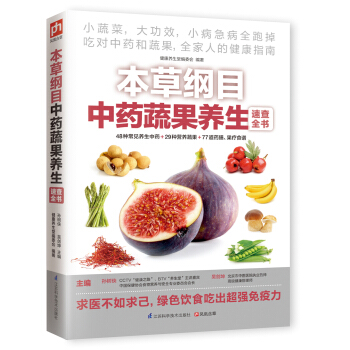


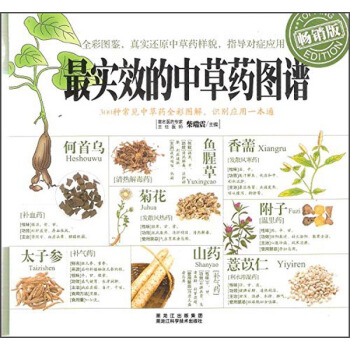


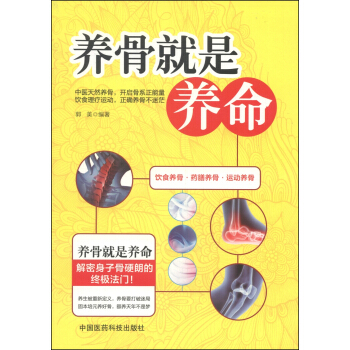
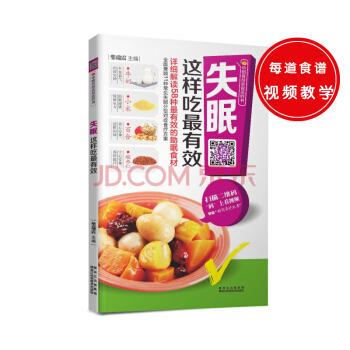

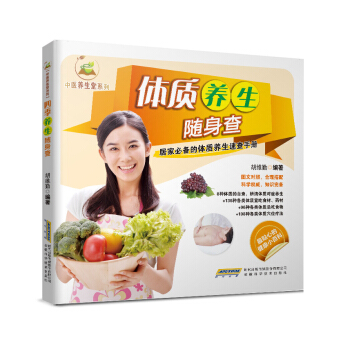
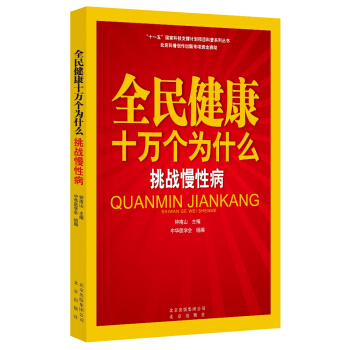
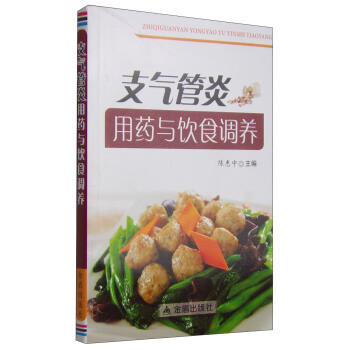
![不断食汤谱:7天喝出易瘦好体质 [脂肪燃焼 ダイエットスープ] pdf epub mobi 电子书 下载](https://pic.tinynews.org/11729639/559e23dfNe3c7792e.jpg)
